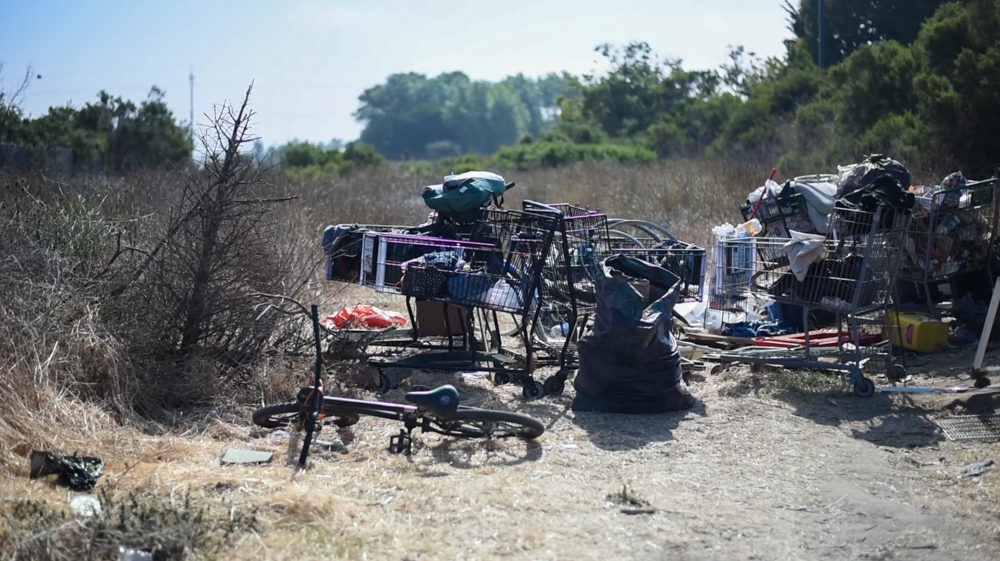Fires Trigger Lompoc Homeless Sweeps
Outreach Efforts Help River Squatters to Leave Voluntarily

In response to the growing threat of fires and crime associated with homeless encampments along the Santa Ynez River, the Lompoc Police Department has spearheaded a campaign to relocate as many of the outdoor squatters as possible. “We talking Third World conditions,” said Police Chief Pat Walsh. “It’s not just a crime issue; it’s a public health issue.”
In the past year, there have reportedly been 28 fires in the dry brush along the city’s riverbank. In the past week, there have been three. Walsh stressed that not one arrest has been made and that his department was deploying the carrot rather than the stick. Enjoined in the effort is Home for Good — a homeless services omnibus group — the Good Samaritan homeless shelter, and Santa Barbara county’s departments of Behavioral Wellness, Public Health, and Probation.
“There’s not any one type of homeless down here along the river bed,” Walsh said. “We try to meet people where they are in their lives.” Walsh said 100 people had been living along the river banks eight months ago; now, he estimated, it’s about half. Still, he said, the number of petty thefts remain unacceptably high. “If you live within half a mile [of an encampment,] anything left in your backyard will be gone,” he said. Rapes have grown more frequent, he added, and some of the squatters have used fire as a way to get back at those with whom they’re feuding.
Last November, a homeless man squatting in a makeshift camp was shot to death by the jealous ex-boyfriend of his new girlfriend. Later that same day, Lompoc Police officers shot and killed the shooter, Geronimo Vicente Santos, when he pulled a gun on them. This week, the District Attorney ruled the homicide of Santos — shot eight times and grazed by two additional shots — was justified.
Walsh said the riverbed has proven an attractive nesting spot for homeless over the past decade because it’s located close to the services in downtown Lompoc. People come from as far away as South Carolina and Oklahoma, he said, but most are from the Lompoc area and the Santa Ynez Valley. Some come up from Santa Barbara, too.
“Lompoc is a friendly and generous community,” Walsh said. “People know that.” He said a homeless woman and her son were given tickets back home to Arizona after “the hat was passed,” raising $300. Efforts are taken to reunite riverbank dwellers with their families of origin, he said. Failing that, they’re helped to find housing elsewhere.
Some of the encampments, Walsh said, are quite ingenious. A couple of former construction workers, he noted, built a home complete with a deck offering commanding views of the river. Others, however, live in trenches that appear poised to collapse.
With water being released downstream from the dam at Lake Cachuma, the river stands a foot deep as it wends through Lompoc. This has hampered outreach efforts. Police have issued written flyers on trees and telephone poles near the camps, notifying occupants they are trespassing. For the time being, they are being asked to leave voluntarily. As of September 10, the law will be enforced.



